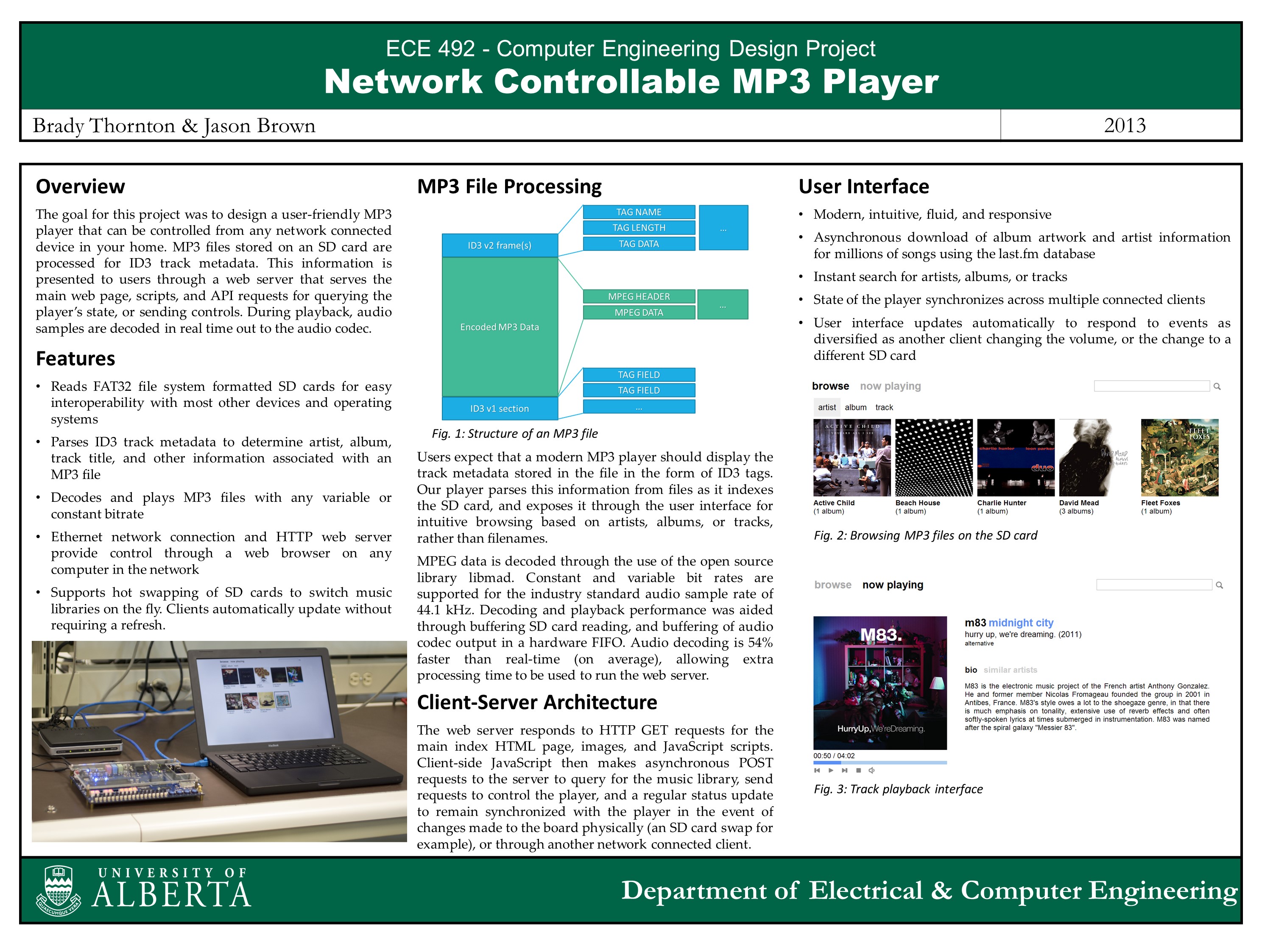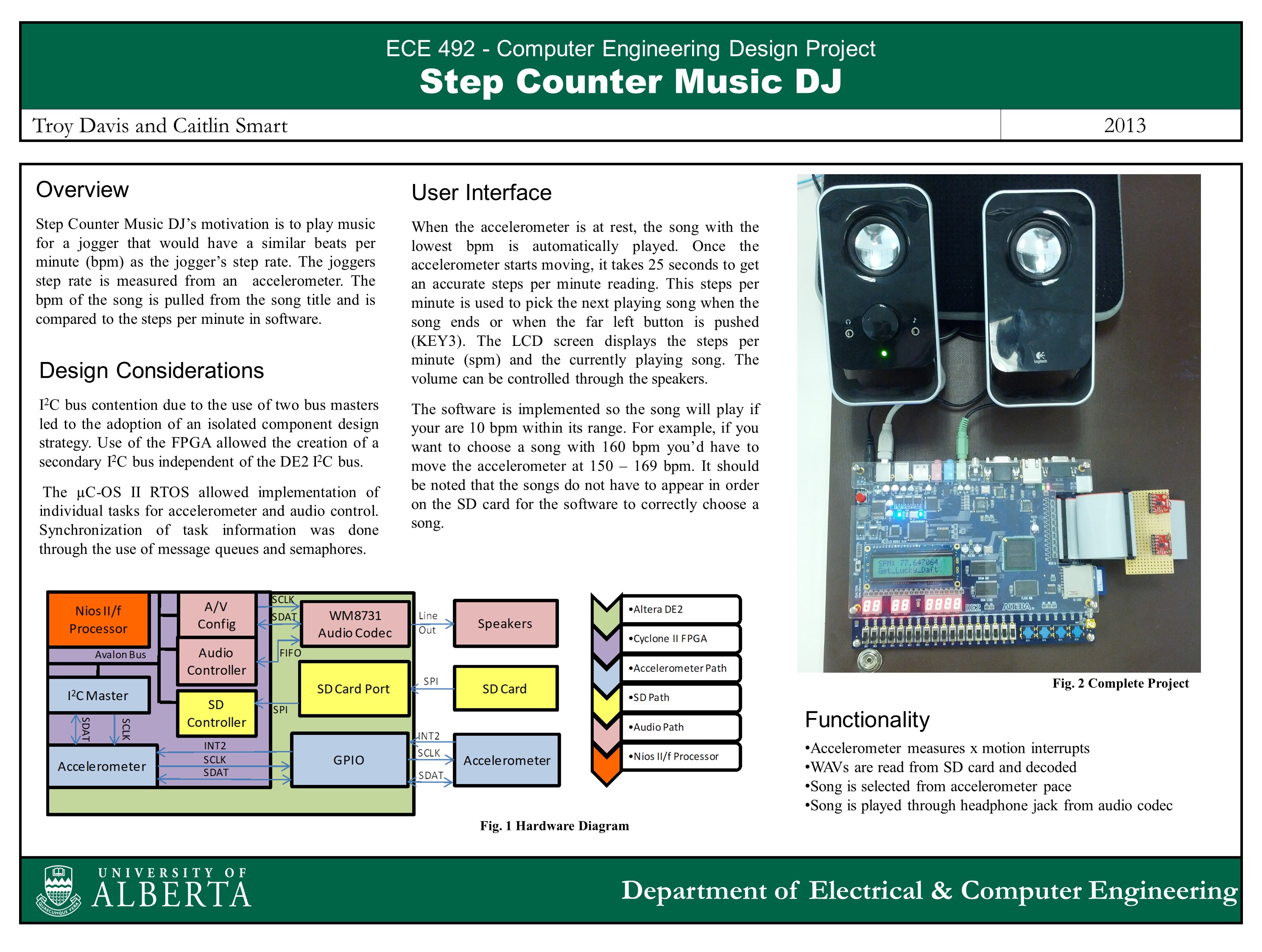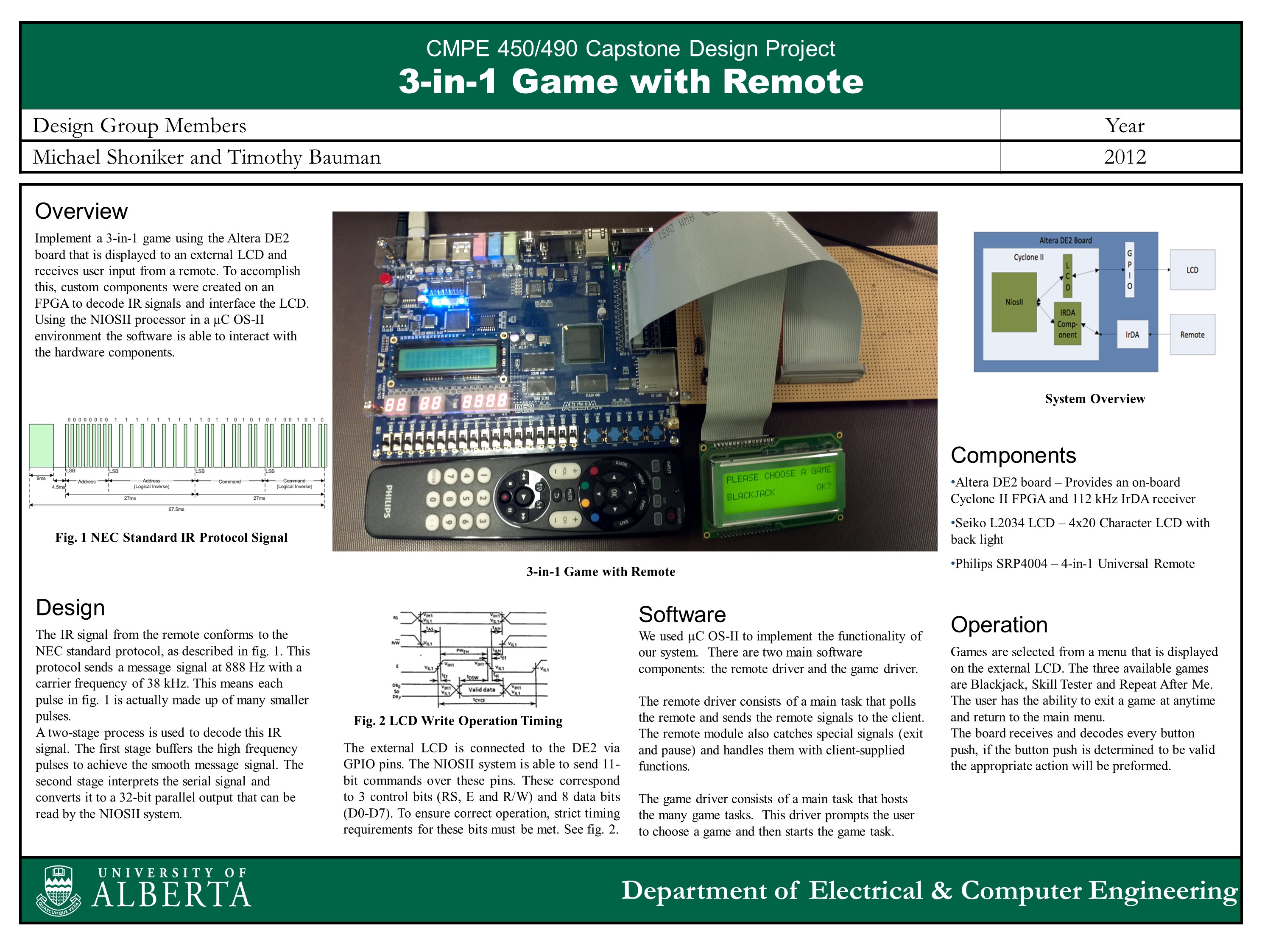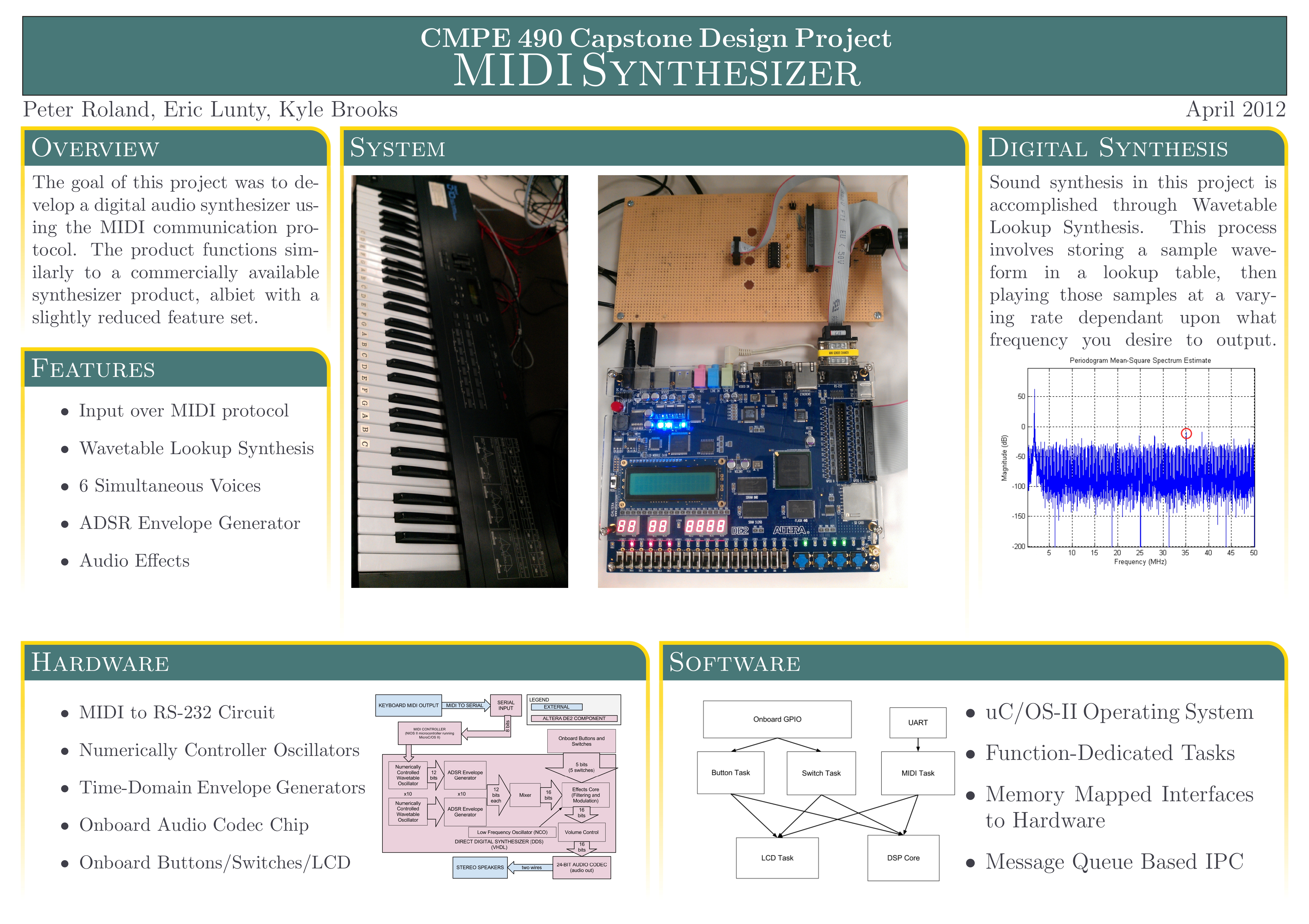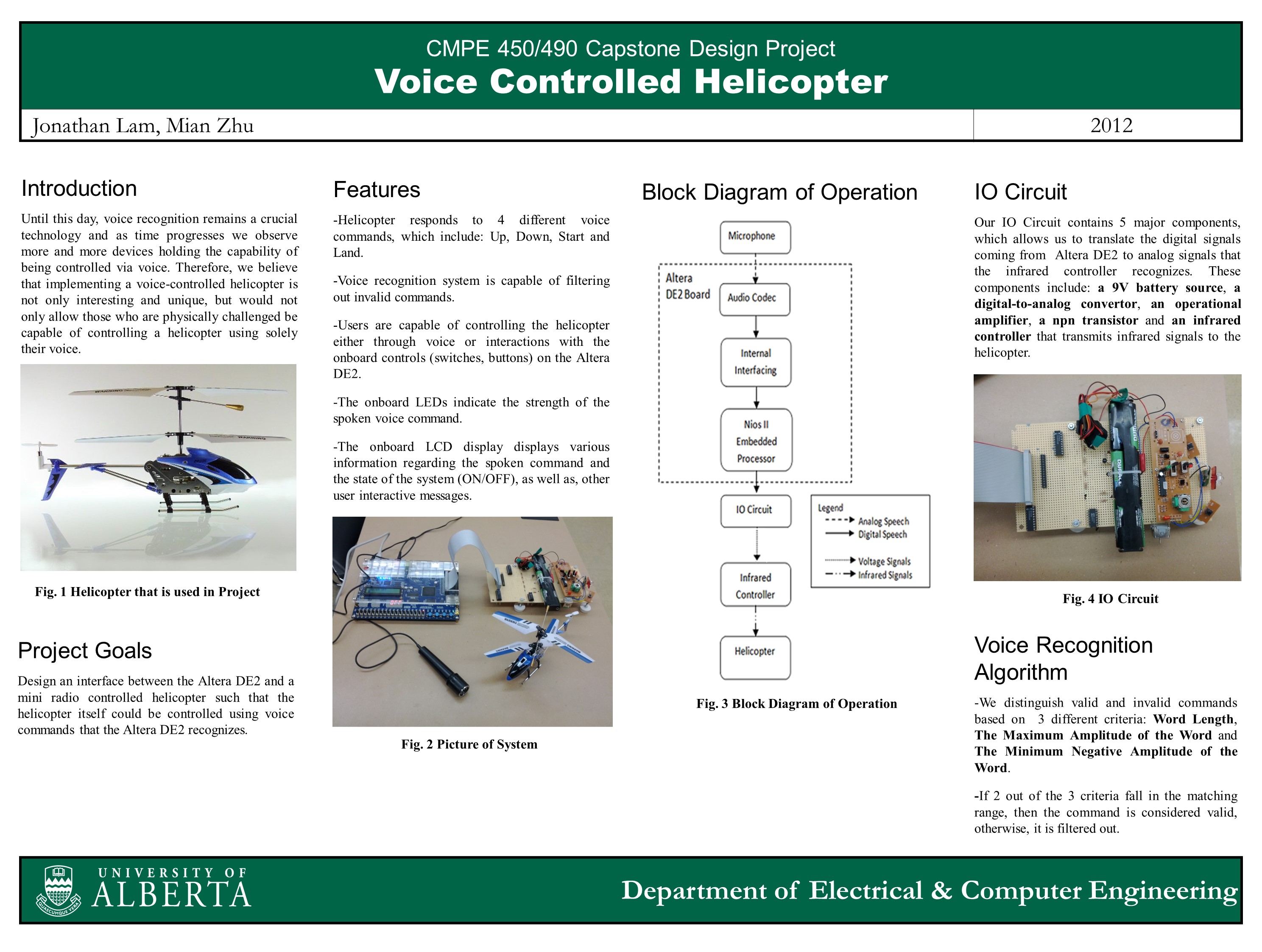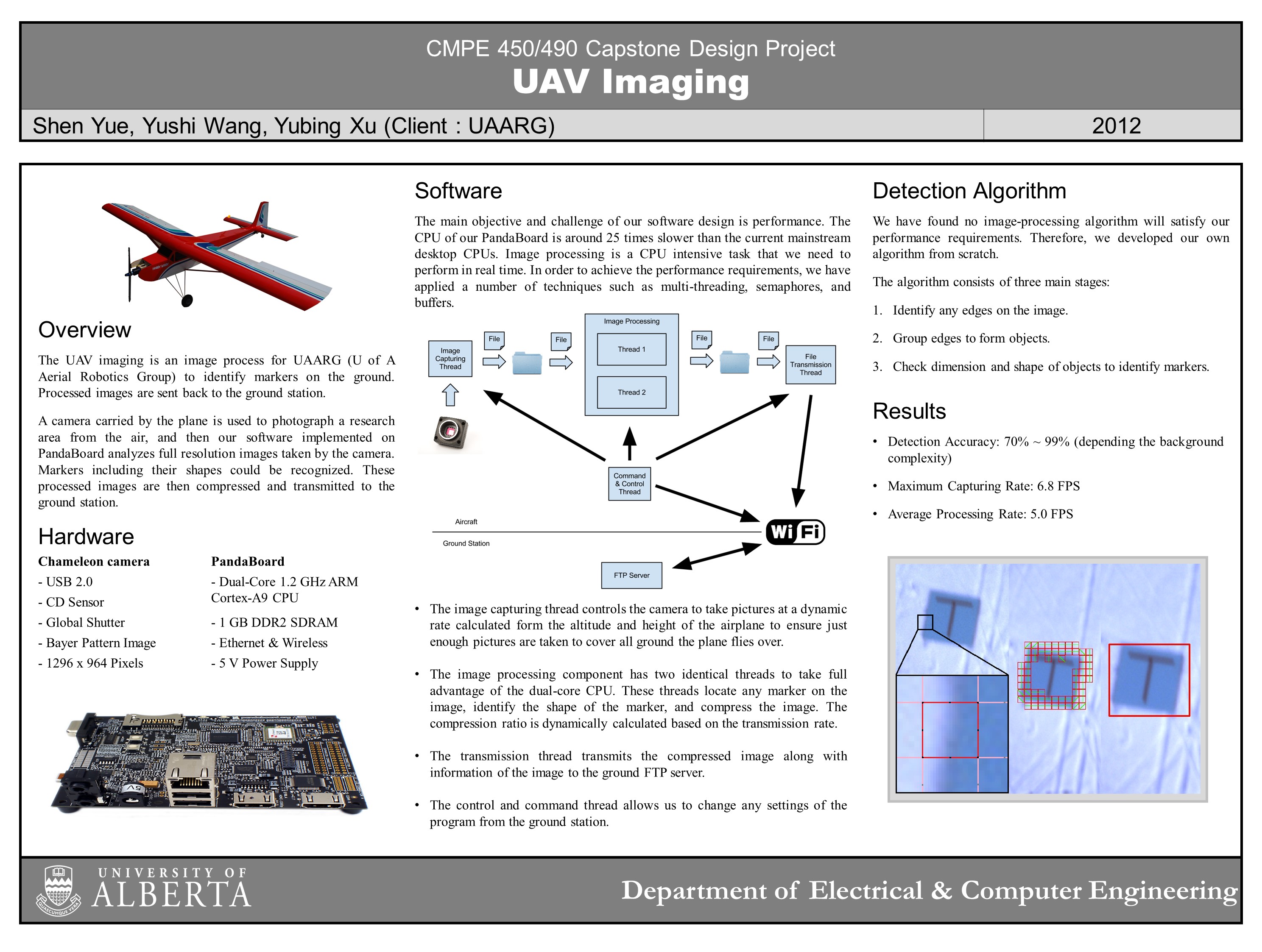Projects from the Department of Computer Engineering
Team Members: Elysia Jong, Eric (Qingyue) Zhou
This project is a virtual guitar imitation device, realized by several sensors and an accelerometer attached onto two gloves. There are 7 tactile sensors corresponding to 7 notes on the left glove. On the right glove, there are 4 tactile sensors to change options, implemented as Reset, Mode Switch, Octave Up, and Octave Down (on the fingertips), in addition to an accelerometer. To play, the user should touch their left thumb to a note sensor and make a strumming action with their right arm as if playing a guitar in the air.
Discipline:Computer Engineering
Team Members: Brady Thornton, Jason Brown
The goal for this project was to design a user-friendly MP3 player that can be controlled from any network connected device in your home. MP3 files stored on an SD card are processed for ID3 track metadata. This information is presented to users through a web server that serves the main web page, scripts, and API requests for querying the player’s state, or sending controls. During playback, audio samples are decoded in real time out to the audio codec.
Discipline:Computer Engineering
Team Members: Robert Miller, Adam Eliason
The interactive virtual exercise bike allows users to enjoy a simulated bicycle tour in Google Street View while exercising. Users can choose from any starting location available in Google Street View and choose their own route as they pedal along. Resistance for the bicycle is provided by a 300W electric generator powering a series of 27W bulbs for varying resistance. The users workout statistics such as distance and time are calculated and displayed in real time via a web server application running on the Altera DE2 development board.
Discipline:Computer Engineering
Team Members: Troy Davis, Caitlin Smart
Step Counter Music DJ’s motivation is to play music for a jogger that would have a similar beats per minute (bpm) as the jogger’s step rate. The joggers step rate is measured from an accelerometer. The bpm of the song is pulled from the song title and is compared to the steps per minute in software.
Discipline:Computer Engineering
Team Members: Michael Shoniker and Timothy Bauman
Implement a 3-in-1 game using the Altera DE2 board that is displayed to an external LCD and receives user input from a remote. To accomplish this, custom components were created on an FPGA to decode IR signals and interface the LCD. Using the NIOSII processor in a µC OS-II environment the software is able to interact with the hardware components.
Discipline:Computer Engineering
Team Members: Robert Hood, Max Marcus, Barry Peyton
To interface an RC car to an Apple iOS handheld device, providing the user with a more interactive experience, controlling the car through both the iOS devices’ touch screen and built in accelerometer.
Discipline:Computer Engineering
Team Members: Peter Roland, Eric Lunty, Kyle Brooks
The goal of this project was to develop a digital audio synthesizer using the MIDI communication protocol. The product functions similarly to a commercially available synthesizer product, albiet with a slightly reduced feature set
Discipline:Computer Engineering
Team Members: Jonathan Lam, Mian Zhu
Until this day, voice recognition remains a crucial technology and as time progresses we observe more and more devices holding the capability of being controlled via voice. Therefore, we believe that implementing a voice-controlled helicopter is not only interesting and unique, but would not only allow those who are physically challenged be capable of controlling a helicopter using solely their voice.
Discipline:Computer Engineering
Team Members: Jordan Tymburski, Rachita Bhatia
This project involves the creation of an Intruder Alert System. The idea behind the system is to capture consecutive video frames, analyze them for detecting motion, and output the final result. The three major components used in the project include a Camera, a TV Decoder chip on the Altera DE2 board, and a VGA screen to output the resulting video highlighting any detected motion
Discipline:Computer Engineering
Team Members: Shen Yue, Yushi Wang, Yubing Xu
Client: UAARG The UAV imaging is an image process for UAARG (U of A Aerial Robotics Group) to identify markers on the ground. Processed images are sent back to the ground station. A camera carried by the plane is used to photograph a research area from the air, and then our software implemented on PandaBoard analyzes full resolution images taken by the camera. Markers including their shapes could be recognized. These processed images are then compressed and transmitted to the ground station.
Discipline:Computer Engineering
Explore
Explore projects from other disciplines!

